



From the graveyard comes the chilling sound of moving earth and the creaking or a coffin lid. A creature from the very depths of legend and nightmare is on the prowl…a vampire. But the monster who drinks human blood and condemns his victims to the ranks of the living dead is not just a specter from the past. The vampire lives on, in a new and awful guise, to strike terror in our time.
With nightfall came terror for the people of Dusseldorf. A vampire
was on the prowl in the German city, a creature from the very
depths of nightmare who preyed on his victims after dark, who
drew no distinction between man, woman, child or bird, who consummated
his crime by drinking their blood.
Always there was blood. The police had become hardened to the
most frightful sights at the scenes of the vampire's atrocities.
On May 26, 1913, for example, they had discovered the body of
13-year-old Christine Klein, mutilated as she slept in a bedroom
above her parent's inn at nearby Koln-Mulheim. Her throat had
been cut from ear to ear, and there was clear evidence that the
vampire had gorged on her blood.
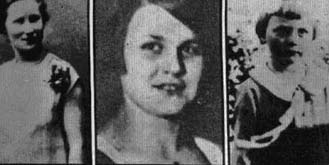
It was the same with five-year-old Rose Ohliger, whose body was
found behind a poster hoarding near her home. The ghoul had drunk
some of her blood, too. Every victim displayed the same tell-tale
signs. Blood had been licked from one girl's throat, another had
traces of human saliva and tongue smears around a wound on her
temple. A child's blood covered hands has been almost licked clean.
In one ghastly night, five-year-old Gertrude Hamacher and her
14-year-old stepsister, Louise Henzen, had been cut open and abused.
A 30-year-old servant girl named Maria Hahn had taken an hour
to die, blood pumping from wounds in her neck and breasts until
the vampire inflicted the final coupe de grace to her heart.
Already nine people in all had been murdered to feed the ghoul's
appetite, and not even birds were safe. A swan had been found
decapitated in a park, with indications that its blood, too, had
been supped. Nobody could blame the terrified people of Dusseldorf
for responding to the dark, primitive belief that the crimes could
only have been committed by a vampire.
Fear of the supernatural demon who feasted on human blood, known
as Vampir in Hungary and Nosferatu in other Eastern
European countries, had held Europe in its grip for centuries.
The rope of legend, its strands inextricably twisted and confused,
stretched back to the time of Imperial Rome, whose soldiers believed
that drinking the blood of freshly slaughtered bull ensured bravery
in battle, and early Black Magic rites involved drinking the blood
of a dead enemy to prevent his spirit wreaking vengeance from
the other side.
After the crucifixion of Christ, a group called Guardians of the
Sepulcher evolved a tainted form of Christianity, which included
the heretical view or the resurrection of the human body. The
sect was persecuted and finally dispersed to Germany and Eastern
Europe - the cradle of the vampire cult - carrying their twisted
beliefs with them. As most of them and their descendants and disciples,
lived as hermit, a legend grew up of the mysterious men who had
discovered the secret of everlasting life.
Eventually they became associated with quite genuine instances
of people who appeared to have 'risen from the dead'. These were
tragic cases of catalepsy or suspended animation, a trance-like
condition which often accompanied acute hysteria. Believed to
be dead, the victims were in fact buried alive. When, according
to religious custom, they were later exhumed and examined, there
were often signs of scratch marks and blood where they had tried
to claw themselves from the coffin.
The great medieval purge against Witchcraft
gave a new impetus to the vampire legend, and although earlier
Pagan beliefs
already included references to 'blood sucking demons', it was
not until the 17th century that all the superstitions
drew together and The Vampire was born.
Many experts claim that the fears of superstitious peasants were
fanned by a religion perpetually on the lookout for a bogeyman
to frighten them back into the safety of the Church,
but there is no doubt that within a century a whole Vampire 'folklore'
had developed in the backward rural regions of Central and Eastern
Europe.
The foul creatures slept by day in their coffins and rose at nightfall
to start their unholy feasting. They could dematerialize and materialize
at will- often in the form of a mist - and thereby gain entrance
to a room through a keyhole or under a door. Six feet of soil
heaped on their coffins could not keep them at bay, and many people
believed a vampire'' grave could be recognized by small 'escape
holes' in the earth.
Face to face, there is no doubt at all about a vampire's identity.
His fingernails were curved and his eyebrows met across his nose.
His breath was vile and reeked of the slaughterhouse. Although
pale and lean, he possessed enormous strength and, on parting
his abnormally red lips, he revealed razor sharp teeth.
The vampire overcame his victims by hypnosis and sensual, stroking
movements before plunging those frightful teeth into the throat
and drawing blood. But the victim's ordeal had then only begun.
The kiss of the vampire ensured that the victim, too, would join
the ranks of the undead, forever doomed to sustain his immortality
by feeding on the blood of human beings.
Mercifully, there were ways of warding off a vampire. He could
not cross fire or water and recoiled from any holy object like
a rosary or crucifix. You were also safe if you stood in a circle
of holy water - thrown at a vampire, it had the burning affect
of molten lead - or had taken the precaution of placing garlic
or wolfbane, a poisonous plant, at your door or windows. Firearms
were useless unless they fired a silver ball or bullet, preferably
made from a crucifix.
The safest and surest way of cutting short a vampire's immortality
was to trace him to his lair. If the coffin were still empty,
a crucifix placed inside would prevent the vampire returning and
he would crumble to dust in the first rays of dawn. By day, an
exhumed vampire was an atrocious spectacle, his eyes wide open
as if scaring at his accusers, his lips scarlet and stained, his
body soft and fresh as if buried that day, and the coffin awash
with human blood.
A stake - preferably of aspen, hawthorn or maple - driven with
one blow through the creature's heart ended it's life, although
many people insisted that it's head should also be removed with
a single stroke of the sexton's spade. Transfixed by the stake,
the ghoul aged instantly, its body withered and crumbling, it's
skeleton falling to ash.
One of the best documented cases of vampirism occurred two years
later at the town of Meduegna, in what is now Yugoslavia, when
a young man named Arnold Paole returned from military service
in Greece. He seemed deeply disturbed and told his fiancee he
had been 'visited' by a vampire, but had managed to escape from
it's spell. Their engagement lasted only a few months. During
harvest celebrations, he fell from the top of a hay wagon and
died from his injuries.
A month after the funeral, villagers began to claim that they
had seen his ghost, and, after the apparitions, they felt weak
and drained of energy. Then, one by one, they started dying. Throughout
the winter, Meduegna live in a state of terror until, on 7 January
1728, it was decided to open Paole's grave.
A team of army surgeons, sent for by the terrified villagers,
shrank back as the coffin lid was prised off. Paole was lying
on his side, his mouth open and blood running from his lips. A
layer of skin had peeled from his hands, revealing fresh skin
and new nails. There were worse horrors to come. When a stake
was driven through Paole's breast, the body gave a piercing shriek
and a fountain of blood spurted from the wound. To make sure the
vampire had not infected his victims, whitehorn stakes were driven
through all five in the graveyard and the remains burned.
Now, 200 years later, it looked - difficult as it was to believe
- as if a phantom gripped by the same blood lust was at work on
the modern industrial city of Dusseldorf. The homicidal attacks
occurred over 17 years and the police seemed powerless. And then,
on 24 May 1930, a woman walked into police headquarters and announced,
"My husband is the Vampire."
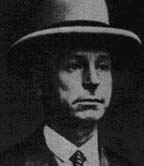
It was no wonder that 48 -year old Peter Kurten had remained unsuspected
for so long. Far from being cadaverous, canine toothed and reeking
of the charnel house, he was prim, dapper, insufferably bourgeois
and permanently wreathed in a cloud of Eau de Cologne.
Kurten was tired for nine murders and seven attempted murders,
found guilty and condemned to death, and even as he took his final
walk on 2 July 1932, blood was the uppermost thought on his mind.
He asked the prison psychiatrist shortly before being let to the
guillotine, "Tell me, after my headed has been chopped off,
will I still be able to hear, at least for a moment, the sound
of my own blood gushing from my neck?"
Kurten was one of the frightening parade or perverts who are psychopathic
or medical 'vampires', degenerates who's lust for human blood-
known as haematomania - is based on sadistic and sexual impulses.
Today the enlightened world merely turns from such creatures with
revulsion, but it is easy to see how, in past centuries, they
could strike terror into superstitious pheasants and help to strengthen
the entire vampire myth.
Nor was Kurten the worst of these monsters. In 1440, the 36 year
old French Marshall Gilles de Rais
- one of Joan of Arc's former followers - was executed after confessing
to the murder of 40 children. An appeal court heard how he had
lured the children to his castle, where they were strangled, hacked
to pieces and disemboweled while de Rais gloated over the carnage
and drank deep of the children's blood.
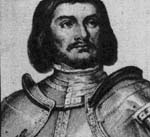
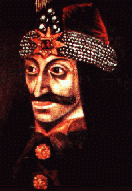
Sixteen years after Gilles de Rais
was excommunicated, strangled and burned at Nantes, Vlad the Second of Wallachia was
born in Roumania. The noble boy grew up to be a ferocious military
leader and eventually inherited the title Dracul from an
ancestor who had earned it as a result of the way he fought against
the Turks.
Nothing more might have been heard of Vlad Dracul
except for one thing: he was a sadistic pervert, who once impaled
20,000 Turkish invaders on wooden stakes and watched them die
in agony. The exploit earned him the titles of Tepes - The Impaler
- and also gave him an enduring taste for this particular form
of torture.
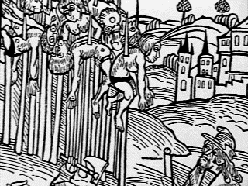
He brought terror to the villages of the Carpathian Mountains,
particularly Aref, which lay in the valley below Castle Vlad.
Petty criminals died on his stakes, including village women he
had sentenced merely for being 'lazy'. So did disrespectful visiting
diplomats and monks who failed to shower him with sufficient praise.
It was this story, which 300 years later, inspired Bram Stoker to
write the lurid novel Dracula,
a horror story which captured the imagination of the world and
crystallized in one name the whole vampire legend.
Dracula, however, could just as easily been a woman. In 1610,
Countess Bathori was
caught red-handed in the act of drinking human blood in Csejtl
Castle, also in the Carpathians. At her trial she described how,
years earlier, she had hit a maid too hard that blood spattered
her face. When she washed off the blood and looked in the mirror,
her face appeared more beautiful.
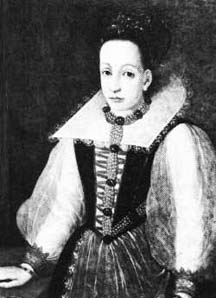
From that moment, she began to bathe regularly in virgin's blood
- and, to obtain it, she murdered 600 peasant girls. Three of
them were found, bound, tortured and drained of blood, in the
dungeons of her castle when villagers forced their way in. The
countess's three accomplices were burned at the stake in 1611,
but because of her noble birth she could not be executed. Instead,
she was walled up alive in her castle, and, although she died
on 2 August 1614, many believe she had achieved immortality through
drinking human blood and could continue to claim victims.
It was this same irrational fear which plagued Paris in 1849 when
a wave of desecrations took place in the city's graveyards. Bodies
were torn from their coffins, violated and mutilated. "There
is evidence," said the authorities, "that vampirism
is involved."
The vampire proved to be Sergeant Victor Bertrand, a pervert who
later admitted to an 'irresistible impulse' to visit cemeteries,
disinter and violate corpses, and drink their blood. Huge crowds
attended his trial in July, 1849, when he was sentenced to a mere
year in jail on the grounds that no murders had actually been
committed.
The same could not be said of the vampire - and cannibal - Fritz
Haarman, who was tried in the German city of Hanover in 1924 for
the murder of 27 boys between the ages of 12 and 18.
The evidence was fearful. Haarman and a homosexual accomplice,
Hans Grans, picked the boys up in the streets and took them back
to Haarman's cooked-meat shop. After overpowering them, Haarman
killed his victims by biting into their throats. The bodies were
then cut up, cooked and either eaten by the two monsters or sold
over the counter to unsuspecting customers.
Even today vampire scares are still common in remote or superstitious
communities. In 1967, for example, the villagers of Manaus, in
Brazil, was reported to have been terrorized by 'a girl vampire
with pointed teeth' who left round marks on the jugular veins
of children.
Dracula may be dead but he won't lie down. After all, it is
his nature.
This article originally appeared in "Out of
This World: The Illustrated Library of the Bizarre and Extraordinary"
by Phoebus Publishing Company 1976/1977/1978 and is now out of
print.


 Point Communcations
Point Communcations